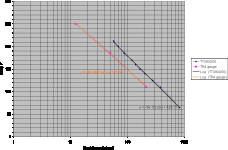Rrbbeerrttoo
Banned
Offline
Folks, I would appreciate any comments.
Moss catalog classifies the 160F thermostat for hot weather , 180F for standard, etc. Yet Moss supplemental info. for apparently overheating TR4a says the 160F opens and probably stays open thus coolant flows through radiator too fast, not dropping fluid temp. enough to cool block. I guess someone with heat transfer background can analyse this statement! Or, you experienced folks can help.
Car came with 160F, has also elec. fan, shield around radiator, valves/ timing ok ; everything in engine seems correct ( ignoring the 3 oil drops in tiled floor )but the block and alternator body seem hot...can not touch alt. body after a 30 min. run. I plan to switch to 180F to follow Moss advi as it is simple enough to do! Again I would appreciate your opinions. Yes , I did test the 160F, it opens!
Robert
66' Tr4a Irs
CTC 53788L
Moss catalog classifies the 160F thermostat for hot weather , 180F for standard, etc. Yet Moss supplemental info. for apparently overheating TR4a says the 160F opens and probably stays open thus coolant flows through radiator too fast, not dropping fluid temp. enough to cool block. I guess someone with heat transfer background can analyse this statement! Or, you experienced folks can help.
Car came with 160F, has also elec. fan, shield around radiator, valves/ timing ok ; everything in engine seems correct ( ignoring the 3 oil drops in tiled floor )but the block and alternator body seem hot...can not touch alt. body after a 30 min. run. I plan to switch to 180F to follow Moss advi as it is simple enough to do! Again I would appreciate your opinions. Yes , I did test the 160F, it opens!
Robert
66' Tr4a Irs
CTC 53788L

 Hi Guest!
Hi Guest!

 smilie in place of the real @
smilie in place of the real @
 Pretty Please - add it to our Events forum(s) and add to the calendar! >>
Pretty Please - add it to our Events forum(s) and add to the calendar! >> 
